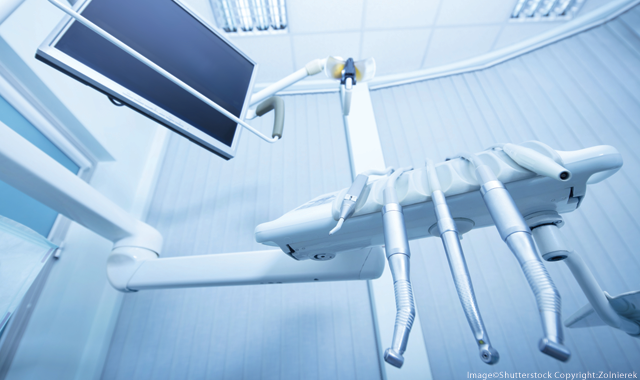The keys to properly designing a delivery system
This vital part of the operatory is often overlooked, so here’s what to consider when planning your practice.There are many important parts of a dental practice, but perhaps none is more important than the dental delivery system. It is the engine that moves dental procedures and care forward, and any design (or redesign) of an operatory must include a consideration of the delivery system.

There are many important parts of a dental practice, but perhaps none is more important than the dental delivery system. It is the engine that moves dental procedures and care forward, and any design (or redesign) of an operatory must include a consideration of the delivery system.
Dr. John Flucke, a dentist with almost 30 years of experience with a practice in Lee’s Summit, Missouri, believes that if a dentist is happy with how he or she can provide care for patients with the ease that current dental delivery systems provide, wait for the future.
“They are going more and more into an ‘all-in-one’ where everything you might want is all part of the delivery system and less has to be purchased a la carte,” says Dr. Flucke, who is DPR’s chief dental editor and a member of the Editorial Advisory Board.
Related reading: Maximizing comfort and efficiency with dental chairs
He believes that a dental delivery system should serve two purposes.
“I personally prefer a rear delivery system because it keeps most of the ‘scary’ looking things behind the patient and not directly in their field of view,” he says. “I also feel that it should be an ergonomic aid to the practitioner. Dentistry is a difficult profession that takes its toll over the years if you are not working ergonomically.”
Posture, longevity and more
Dr. Flucke thinks that current models from Midmark, KaVo, Pelton & Crane and Forest Dental stand out as far as quality and how they allow the dentist to provide quality results and care for the patient.
“They should last 20 years or so,” he says. “A good dental unit needs to be maintained, but it is not expensive to do so. Usually, they are replaced simply because they become outdated in appearance before they totally fail.”
Dr. David Rice is a veteran dentist of more than 20 years and practices in East Amherst, New York. He also prefers a rear delivery system and uses A-dec dental delivery systems.
“It keeps everything away from the patient, making them more comfortable, and it keeps everything neat and clean,” says Dr. Rice, a national author and lecturer on dental topics and a member of the DPR Editorial Advisory Board. “And it’s functional for us.”
He notes that when purchasing a delivery system, the comfort of the dentist and hygienist should be considered so as to not affect their workflow.
“What about posture?” Dr. Rice asks. “You want everything within arm’s grasp.”
Dr. David Juliani is also a dentist with more than 20 years of experience with a practice in Rochester Hills, Michigan. He likes that good delivery systems can provide a dental practice the ability to help patients in a quality and timely manner.
“Obviously, when you are looking to purchase one, you are looking at ease of use, efficiency. You want everything at your fingertips,” he says.
Future-proofing
Dr. Flucke believes that one gets what one pays for in regard to dental delivery systems.
“Good systems require minimal maintenance by anyone. Often a doctor will try for a low price only to find out they lose the money they saved on repair costs,” he notes.
Dr. Rice was impressed with what A-dec had to offer in the way of delivery systems that can change easily.
“You need the ability to replace parts to adapt to the future,” he says. “Unfortunately, we are a disposable society. A, you don’t want to have the company go out of business. And, B maybe your delivery system is mechanically sound, but a little bit out of date.”
Trending article: 8 reasons operatory esthetics matter to your patients
Dr. Rice also observes that maintenance is simple.
“There are daily, weekly and yearly things to do,” he says. “They are simple and efficient and anyone can do them. You have to maintain the waterline that patients drink from or rinse their mouth with. You have to flush the waterlines. The handpiece tubing has to be clean. It takes seconds every morning to make sure it’s clean. Same goes with the vacuum lines.”
Dr. Juliani says that his practice has five Intego treatment centers from Dentsply Sirona and two Teneo treatment centers that he likes using and speaks of highly. The company combines a delivery system with a dental chair to make what it calls a treatment center. He also likes the potential lifespan of his treatment centers.
“The technology available today is incorporated into the treatment system and the delivery system it comes with,” he notes. “The systems are digitally downloaded and can be upgraded with the future in mind.”
Dr. Juliani doesn’t think dental delivery systems will make huge strides in the future, only because of what has been developed up to this point.
“I think they can become even more efficient, but everything is there already,” he says.